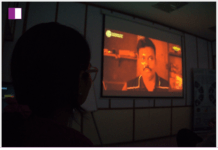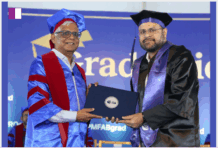Prof. SS Prasada Rao, a distinguished educationist and academic leader, has long emphasized the profound relationship between leadership and teaching. In a recent post, he explored the concept of “Teacher as a Leader and Leader as a Teacher,” eloquently highlighting how these two roles, though seemingly distinct, are deeply connected. Prof. SS Prasada Rao’s insights offer a compelling perspective on the way both educators and leaders can leverage their roles to inspire growth, innovation, and development in their students and teams alike.
Prof. SS Prasada Rao begins by addressing the role of a “Teacher as a Leader.” In the traditional sense, a teacher’s role is often confined to imparting knowledge, guiding students through a syllabus, and ensuring academic success. However, as Prof. SS Prasada Rao points out, a true teacher goes beyond this conventional approach, leading students not just through the subject matter but also through the complexities of real-world challenges. Leadership in teaching is not merely about authority—it’s about guiding, mentoring, and empowering students to become critical thinkers and problem-solvers.
Prof. SS Prasada Rao provides an example of how this leadership manifests in the classroom. He describes a management professor who not only teaches theories and concepts but also encourages students to apply their knowledge through projects, simulations, and case studies. In this environment, students are not passive recipients of information; they are active participants in their learning journey. By fostering creativity, collaboration, and critical thinking, the teacher is not merely delivering a lecture but leading students toward a deeper, more meaningful engagement with the subject. As Prof. SS Prasada Rao rightly notes, a teacher in this capacity is akin to a captain steering a ship through turbulent waters, guiding students through the complexities of their chosen fields.
In contrast, Prof. SS Prasada Rao also highlights the concept of “Leader as a Teacher.” In this case, a leader is not simply someone who manages tasks or delegates responsibilities. A true leader, according to Prof. SS Prasada Rao, takes on the role of a teacher by actively investing in the growth and development of their team members. This leadership style is characterized by mentoring, guiding, and sharing knowledge in a way that equips the team to handle challenges more effectively. A leader who teaches creates a learning environment within the organization, ensuring that team members are not just following orders but understanding the rationale behind strategic decisions and acquiring the skills necessary for future growth.
Prof. SS Prasada Rao offers a vivid example of how a CEO might embody this concept. A leader who takes the time to explain the reasoning behind a company’s strategic direction is acting as a teacher. By breaking down complex ideas, sharing insights, and providing context, the CEO ensures that the team understands both the “what” and the “why” of the company’s objectives. This approach fosters a culture of continuous learning and improvement, where knowledge-sharing is not an exception but the norm. According to Prof. SS Prasada Rao, this style of leadership not only enhances the individual growth of team members but also strengthens the overall performance of the organization.
Prof. SS Prasada Rao’s perspective is that the most effective leaders and teachers are those who understand the overlap between these roles. He argues that a teacher who leads can inspire students to achieve more than they thought possible, while a leader who teaches can elevate the performance of their team by nurturing their growth and understanding. In both cases, leadership and teaching are dynamic, ongoing processes that contribute to personal and organizational success. For Prof. SS Prasada Rao, this dual approach ensures that learning and leadership remain intertwined paths to progress, with both contributing to the development of individuals and the broader institution.
One of the key takeaways from Prof. SS Prasada Rao’s philosophy is the importance of creating an environment where continuous improvement is prioritized. Whether in the classroom or the boardroom, the most impactful individuals are those who foster a culture of learning. As Prof. SS Prasada Rao points out, teachers who take on a leadership role do more than educate—they inspire students to think beyond the textbook, encouraging them to explore, question, and innovate. Similarly, leaders who adopt a teaching mindset do more than manage—they invest in their team’s growth, ensuring that each member is equipped to meet future challenges.
Prof. SS Prasada Rao’s insights also emphasize the responsibility of both teachers and leaders to be lifelong learners themselves. In a world that is constantly evolving, staying static is not an option. By continuously seeking out new knowledge, honing their skills, and remaining open to new ideas, both teachers and leaders can stay ahead of the curve and guide their students and teams more effectively. Prof. SS Prasada Rao encourages educators and leaders alike to view learning as a dynamic, never-ending process—one that contributes not just to personal growth, but also to the success of those they lead.
Prof. SS Prasada Rao’s reflections on the interconnectedness of teaching and leadership provide valuable insights into the roles of educators and leaders in today’s world. His belief that a “Teacher as a Leader” and a “Leader as a Teacher” are two sides of the same coin highlights the importance of guiding, mentoring, and nurturing those in our charge—whether they are students in a classroom or team members in an organization. As Prof. SS Prasada Rao continues to inspire through his academic leadership, his philosophy reminds us that the greatest teachers and leaders are those who not only impart knowledge but also ignite a passion for learning and growth in others.



































